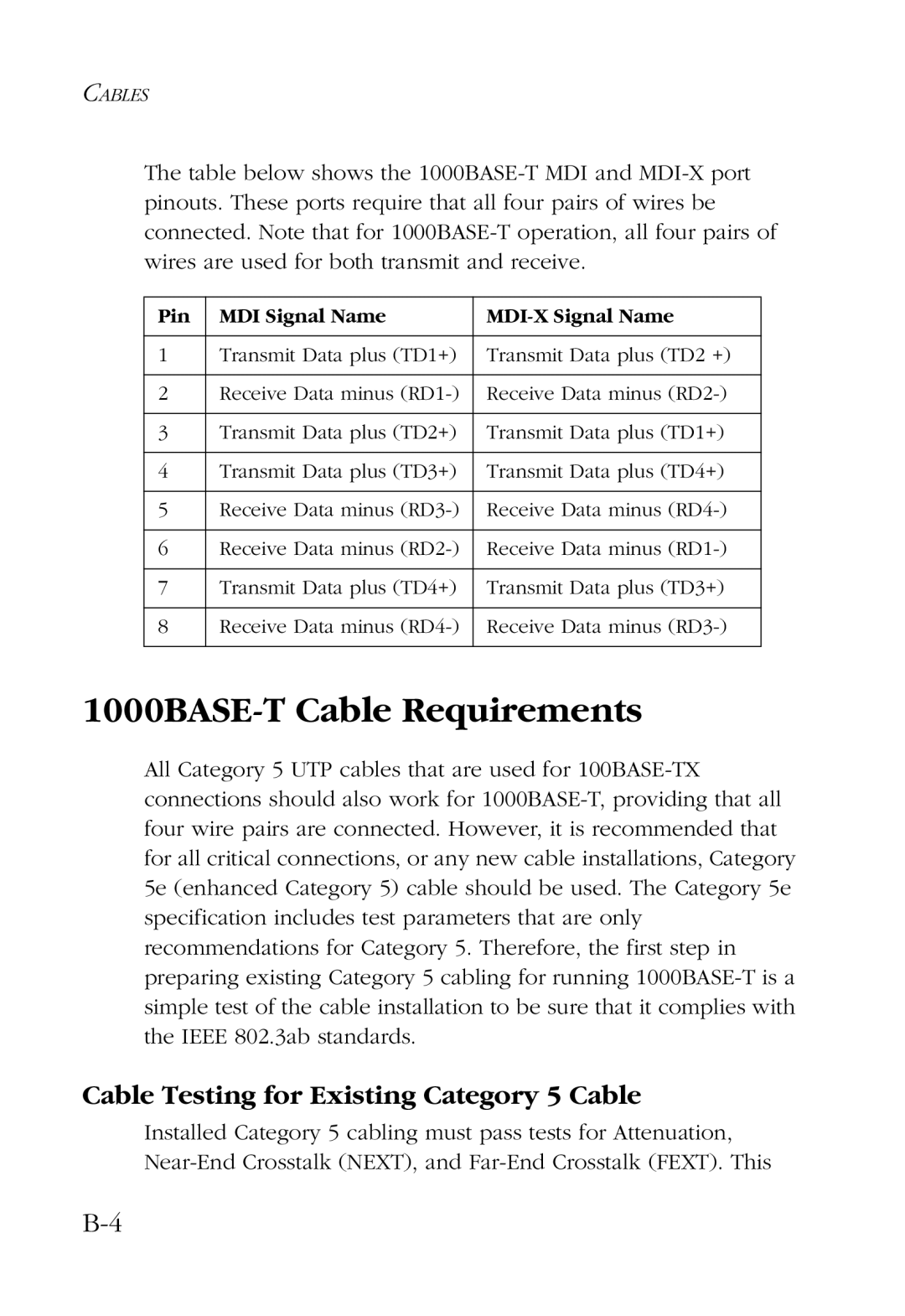CABLES
The table below shows the 1000BASE-T MDI and MDI-X port pinouts. These ports require that all four pairs of wires be connected. Note that for 1000BASE-T operation, all four pairs of wires are used for both transmit and receive.
Pin | MDI Signal Name | MDI-X Signal Name |
| | |
1 | Transmit Data plus (TD1+) | Transmit Data plus (TD2 +) |
| | |
2 | Receive Data minus (RD1-) | Receive Data minus (RD2-) |
| | |
3 | Transmit Data plus (TD2+) | Transmit Data plus (TD1+) |
| | |
4 | Transmit Data plus (TD3+) | Transmit Data plus (TD4+) |
| | |
5 | Receive Data minus (RD3-) | Receive Data minus (RD4-) |
| | |
6 | Receive Data minus (RD2-) | Receive Data minus (RD1-) |
| | |
7 | Transmit Data plus (TD4+) | Transmit Data plus (TD3+) |
| | |
8 | Receive Data minus (RD4-) | Receive Data minus (RD3-) |
| | |
1000BASE-T Cable Requirements
All Category 5 UTP cables that are used for 100BASE-TX connections should also work for 1000BASE-T, providing that all four wire pairs are connected. However, it is recommended that for all critical connections, or any new cable installations, Category 5e (enhanced Category 5) cable should be used. The Category 5e specification includes test parameters that are only recommendations for Category 5. Therefore, the first step in preparing existing Category 5 cabling for running 1000BASE-T is a simple test of the cable installation to be sure that it complies with the IEEE 802.3ab standards.
Cable Testing for Existing Category 5 Cable
Installed Category 5 cabling must pass tests for Attenuation, Near-End Crosstalk (NEXT), and Far-End Crosstalk (FEXT). This
